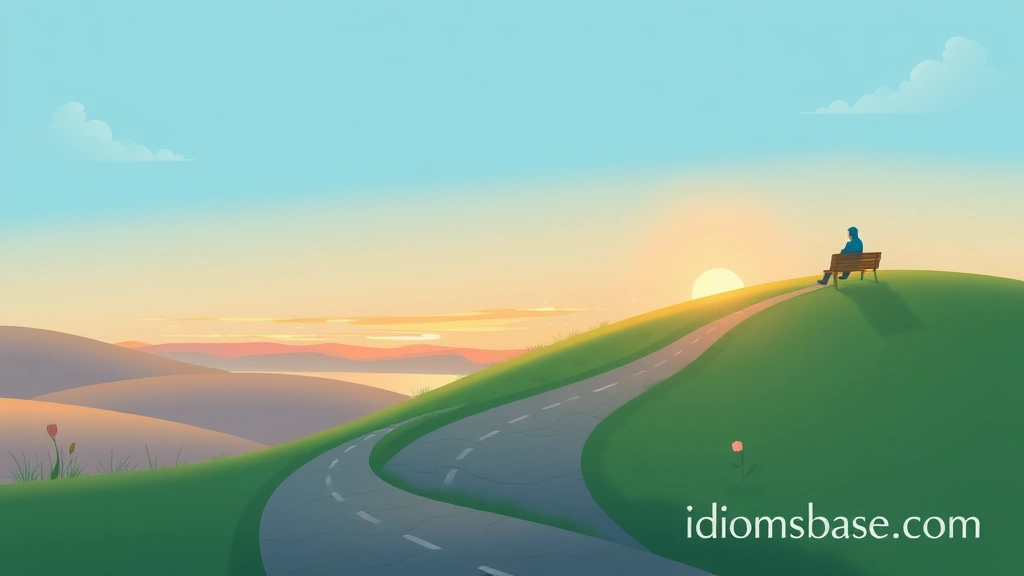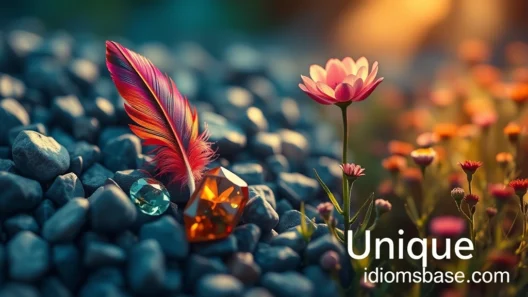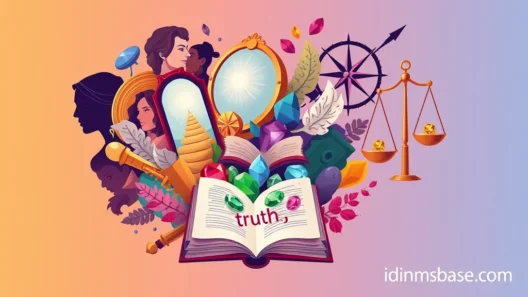Have you ever felt time stretching out, each second a tiny eternity? Waiting is a universal experience, isn't it? Whether it's for a bus, a job offer, or a dream to come true, we all spend a significant portion of our lives in this state of anticipation. But how do we describe that feeling? How do we capture the essence of patience, frustration, or hope that bubbles up during these moments?
Metaphors are powerful tools. They help us understand complex emotions and abstract concepts by linking them to something more concrete and relatable. So, let's dive into a world of vivid imagery and explore 38 captivating metaphors for waiting. You'll find new ways to express that unique blend of hope, anxiety, and stillness that comes with biding your time.
The Art of Waiting: 38 Metaphors to Describe the Undescribable
Waiting can feel like many things – a slow dance, a heavy cloak, or even a blossoming flower. Here are some of our favorite ways to metaphorically describe this universal human experience.
Waiting as a Physical State or Object
- Waiting is a stretched elastic band: The tension builds, and you know something has to give eventually.
- Waiting is a paused movie: Everything is frozen, and you're just eager for the action to resume.
- Waiting is a locked door: You know what's behind it, but you can't enter yet.
- Waiting is a heavy cloak: It weighs you down, making every movement feel cumbersome.
- Waiting is a long tunnel: You can see the light at the end, but the journey through is dark and uncertain.
- Waiting is a ticking clock: Each second echoes, reminding you of time passing.
- Waiting is a held breath: You're suspended, unable to fully exhale until the moment arrives.
- Waiting is a stagnant pond: Nothing moves, and the surface reflects only stillness.
Waiting as a Natural Phenomenon
- Waiting is a brewing storm: The atmosphere is charged, and you sense a powerful event approaching.
- Waiting is a slow sunrise: The light gradually appears, promising a new day.
- Waiting is a dormant seed: It holds incredible potential, just waiting for the right conditions to sprout.
- Waiting is a tide slowly turning: A subtle, powerful shift that will eventually bring change.
- Waiting is a chrysalis: A period of transformation, where something new is forming within.
- Waiting is a deep winter: A time of quiet, rest, and preparation before spring's awakening.
- Waiting is a slow river: It moves steadily, carrying you towards an unknown destination.
Waiting as a Journey or Process
- Waiting is walking on a treadmill: You're expending energy, but not actually getting anywhere.
- Waiting is running a marathon: It requires endurance, patience, and a steady pace.
- Waiting is climbing a mountain: Each step is slow, but you're steadily moving towards the summit.
- Waiting is baking bread: It needs time to rise, and you can't rush the process.
- Waiting is building a puzzle: Each piece fits slowly, revealing the bigger picture.
- Waiting is digging for treasure: You keep digging, hoping to unearth something valuable.
- Waiting is a long queue: You're part of a line, moving forward one step at a time.
- Waiting is navigating a maze: You're looking for the exit, but the path is unclear.
Waiting as an Emotion or State of Mind

- Waiting is a tight knot in your stomach: A mix of anxiety and anticipation.
- Waiting is a silent scream: You want to rush things, but you're forced to be still.
- Waiting is a hopeful whisper: A quiet belief that good things are coming.
- Waiting is a test of will: It challenges your patience and resolve.
- Waiting is a quiet prayer: A hopeful plea for something to happen.
- Waiting is a delicate balance: Between hope and despair, action and stillness.
- Waiting is a bittersweet symphony: A mix of beautiful anticipation and lingering sadness.
More Unique Metaphors for Waiting
- Waiting is a pot on the boil that refuses to boil: You keep watching, but the water just won't bubble.
- Waiting is a cat at a mouse hole: Focused, patient, and ready to pounce.
- Waiting is playing a game of chess: Each move is deliberate, and you're planning several steps ahead.
- Waiting is a forgotten song on repeat: It plays over and over, becoming monotonous.
- Waiting is an unread book: Full of potential stories, just waiting to be opened.
- Waiting is a blank canvas: Ready for creation, but needing the artist's first stroke.
- Waiting is a held note in music: Sustained and resonant, building anticipation for the next chord.
- Waiting is a slow-motion replay: You see everything clearly, but it takes forever to unfold.
Key Takeaways
- Waiting is diverse: It's not just one feeling; it encompasses a spectrum of emotions from frustration to hopeful anticipation.
- Metaphors clarify: Using metaphors helps us articulate the nuances of waiting, making it more relatable and understandable.
- Language empowers: By having a richer vocabulary for waiting, you can better express your experiences and connect with others.
- Patience is key: Many metaphors highlight the importance of patience and the natural progression of time.
- Hope is ever-present: Even in the most challenging waiting periods, there's often an underlying thread of hope.
Frequently Asked Questions About Waiting and Metaphors

Q1: Why are metaphors important for describing waiting?
Metaphors are incredibly useful because waiting is an abstract concept. It's not something you can physically touch or see. By comparing waiting to concrete objects, actions, or natural phenomena, metaphors make it easier to grasp its various facets – the duration, the emotion, the anticipation, or the frustration. They add depth and color to our language.
Q2: Can waiting be a positive experience?
Absolutely! While waiting often has negative connotations like impatience or boredom, it can also be a time of growth, reflection, and anticipation. Think about waiting for a baby to be born, waiting for a promotion you've worked hard for, or waiting for spring after a long winter. These periods can be filled with excitement, hope, and even a sense of peaceful preparation.
Q3: What's the difference between a simile and a metaphor?
This is a great question! Both similes and metaphors are figures of speech that compare two different things. The key difference is how they make that comparison.
- Similes use "like" or "as" to make the comparison (e.g., "Waiting is like a long tunnel").
- Metaphors state that one thing is another, directly equating them without "like" or "as" (e.g., "Waiting is a long tunnel").
Metaphors are often considered more powerful because they create a stronger, more direct connection between the two things being compared.

Q4: How can I use these metaphors in my daily life?
You can use these metaphors in many ways!
- To express yourself: When you're feeling a certain way about waiting, pick a metaphor that resonates. "I feel like I'm a dormant seed right now, just waiting for the right conditions."
- In creative writing: If you're writing a story, poem, or even a blog post, these metaphors can add vivid imagery and emotional depth.
- In conversations: They can help you explain complex feelings to friends or family, making your communication richer and more engaging.
- For self-reflection: Thinking about how you metaphorically experience waiting can offer insights into your own patience levels, hopes, and fears.
Q5: Are there cultural differences in how people perceive or describe waiting?
Yes, definitely! The perception and description of waiting can vary significantly across cultures. In some cultures, patience and long-term planning are highly valued, so waiting might be seen as a natural and even necessary part of life. In others, there might be a greater emphasis on efficiency and immediate gratification, making waiting feel more frustrating. Even the metaphors used might reflect cultural values or common experiences. For example, a culture with strong agricultural roots might use more farming-related metaphors for growth and waiting.
Q6: What are some common emotions associated with waiting?
Waiting can evoke a wide range of emotions, often simultaneously. Here’s a quick table:
| Positive Emotions | Negative Emotions |
|---|---|
| Hope | Impatience |
| Anticipation | Frustration |
| Excitement | Anxiety |
| Patience | Boredom |
| Calmness | Restlessness |
| Reflection | Despair |
| Peace | Anger |
It's fascinating how one single state can bring forth such a diverse emotional landscape!
Conclusion
Waiting is an inescapable part of the human experience. By exploring these 38 metaphors, you've gained a richer vocabulary to describe this often-complex state. Whether it feels like a "heavy cloak" or a "dormant seed," understanding these nuances can help you articulate your feelings, connect with others, and even find new perspectives on patience and time. So, the next time you find yourself in a waiting moment, take a breath, choose your metaphor, and remember the vast, shared experience you're a part of. Which metaphor resonates most with you? Share your thoughts and let's keep the conversation going!






